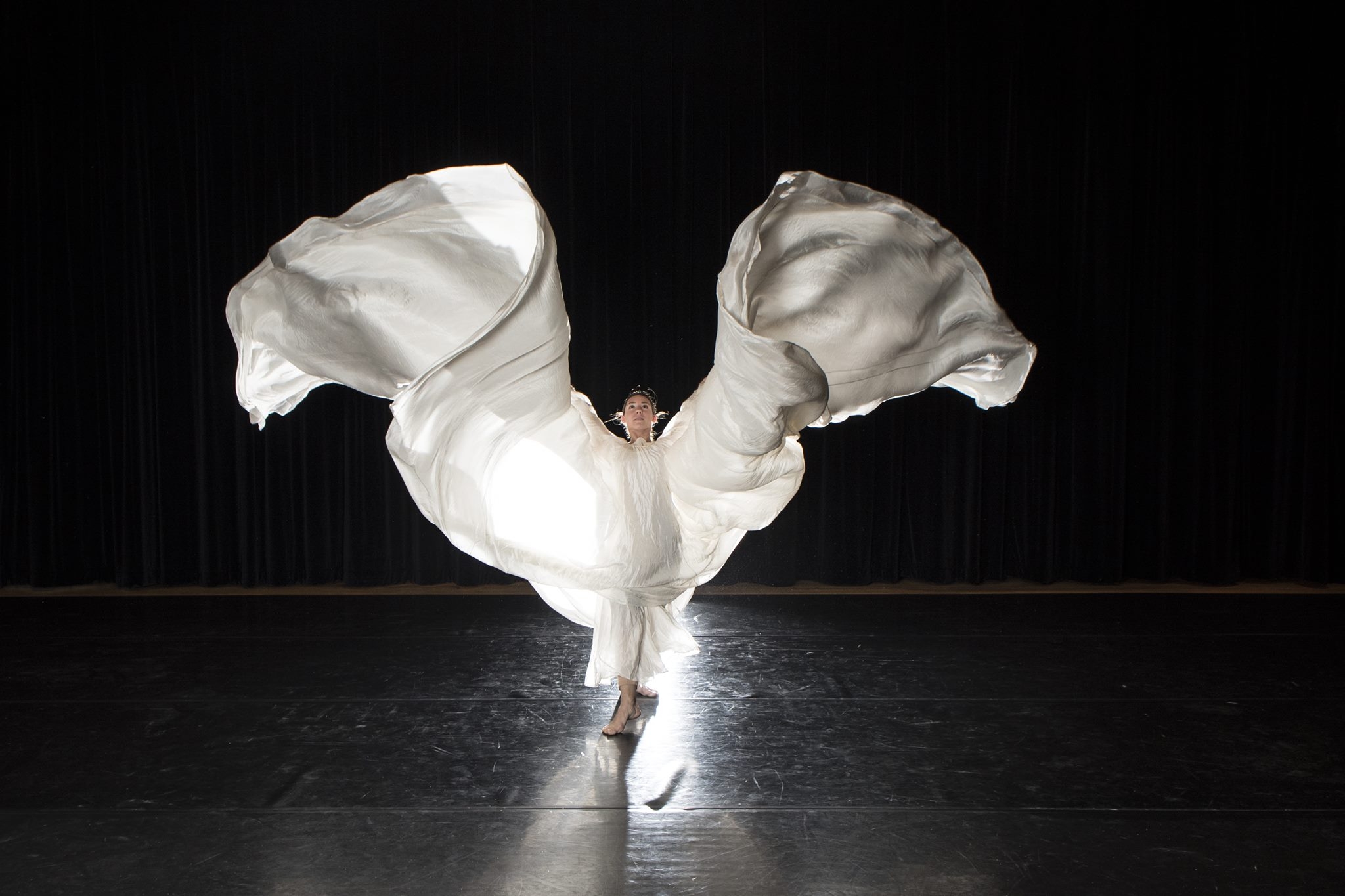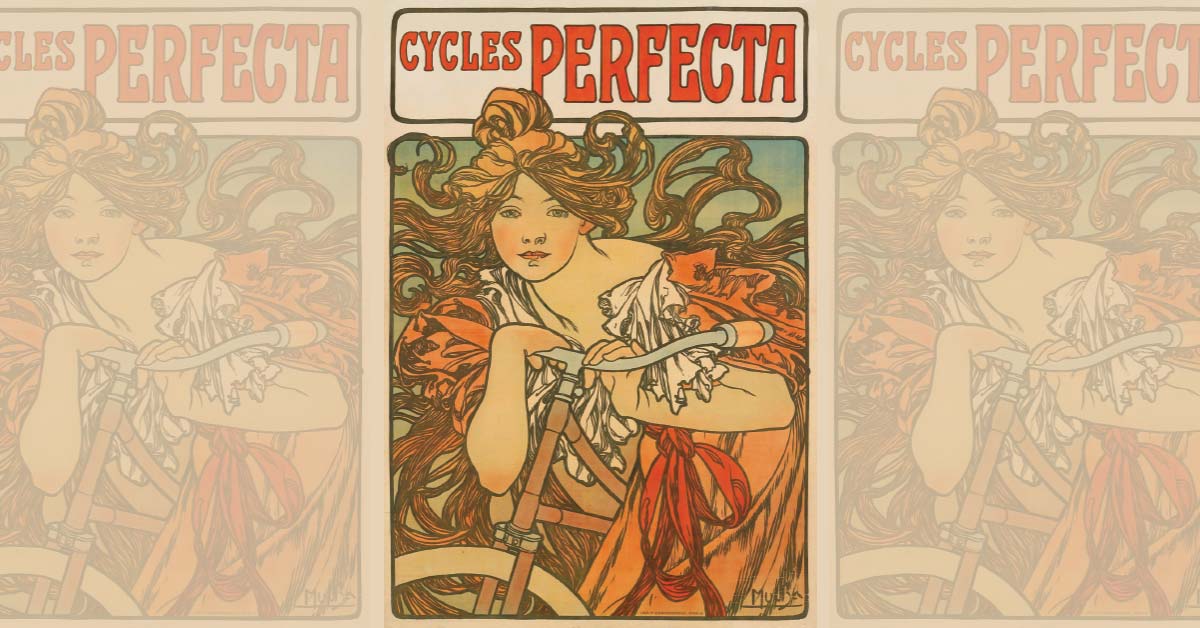In its 38 years rooted in Kalamazoo as Michigan’s preeminent modern dance company, Wellspring Cori Terry & Dancers has featured different company members, collaborated with various musicians and other dancers and choreographers, and otherwise found ways to change it all up just enough to keep its audiences engaged without compromising Cori Terry’s fundamental style and vision for the company.
In keeping with that spirit, this fall’s show, “Eyes Back, Feet Forward,” offers a brief retrospective of modern dance as homage “featuring iconic works from the history of modern dance” from a particular point of view. Namely, Cori Terry’s point of view, for it is her company after all, and she offers an informative, unrehearsed introduction to each of the evening’s four dances downstage as the tech crew transitions onstage and the dancers prepare for the next piece. It makes for a delightfully informal presentation and helpfully curated concert of modern dance that offers an interesting variety of movement as well as gorgeous moments of artful athleticism and mastery.
The most impressive display comes in the closing dance, “New Moon,” Erick Hawkins’s 1989 “true masterwork,” as described by Terry, who spent “nine years of devotion” to Hawkins and his technique, philosophy and choreography in the 1970s. She described “New Moon” as one of the most beautiful of his dances, “very poetic, full of tender moments.”
And the dancers make good on that promise and more as they translate the dramatic, lilting, lovely movements strongly rooted in the classical ballet lexicon with a clear Martha Graham influence. With looping, practically floating stag leaps, tender footed walking with sweeping port de bras, barefoot bourres, little jetés and pas de chats across the stage, this is a terrifically demanding feat for the eight dancers, whose gauzy jumpsuits like draped curtains tied at the ankles give way to black paneled cloaks that transform their ethereality into the presence of priests and priestesses. Devoid of a clear narrative, the cultural influences on this dance and especially the music by Lou Harrison are zen and American Indian with easy, flowing transitions. Original lighting by Robert Engstrom is especially pretty as interpreted and executed by Jon Reeves.
Terry’s 2001 dance “Family Altar” opens the concert and provides a nice bookend to her mentor’s work, though in strong contrast to it. Terry described it “as close to an autobiographical dance as I’ve ever done” that draws from her childhood in the Jewish suburbs of New York City where “dinner was a psychodrama every night.” Her goal was to “translate that emotional tension into a dance,” though she also insisted “it’s as much about emotional connection as it is about emotional tension.”
The tensions and connections are clear in the movement, full of quiet lifts, leaps and falls with dancers raised high overhead and carried upstage as well as little moments of partnering in tandem, weight-sharing and a finale in which all seven dancers who began around a table stage left are literally on tip toes, as if walking on eggshells, struggling to stay balanced. It’s a lovely piece, augmented by Paul Marquardt’s set and Elaine Kauffma’s costumes.
Yvonne Rainer’s 1969 dance “Chair/Pillow” follows “Family Altar” and defiantly offers no symbolism, no story, no meaning whatsoever, as Rainer, a founding member of the Judson Dance Theater, made her project a postmodern one, a rebellion against the theatricality of modern dance, in which pedestrian movements might be elevated to an art, according to Terry.
In this piece, the seven dancers wearing tanks, tees and track pants with sneakers haul folding chairs and pillows onto the stage where they proceed to toss, grab, twist, and sit on pillows; lift chairs; hop, clap, and otherwise make the body percussive; and do so repetitively, ending with rag doll bows, all done with expressionless faces. The result is rather amusing if not comical, set to Ike and Tina Turner’s “River Deep Mountain High.”
And for something completely different and utterly mesmerizing, Loïe Fuller’s 1896 dance “Lilly of the Nile” set to Camille Saint-Saëns’s “Prélude du Déluge” is an innovative, pretty, theatrical solo that features a grand silk costume, like a gorgeous white parachute draped over the body with 12-foot extensions of the arms to recreate organic lines of plants and flowers blowing in the wind.
The giant, sweeping movements, especially of the arms, are visually arresting, particularly under changing colored light and with a mirrored surface on the floor reflecting and swelling the effect, and it ends with the dancer as a bright white swirling tunnel like a glorious tornado. It’s absolutely stunning and such a treat to be able to see this historic work brought to life.
Terry summed up the dances as each having a vision related to connection: her “Family Altar” as emotional connection; Rainer’s Chair/Pillow as no connection; “Lily of the Nile” as connecting to the audience; and “New Moon” as connecting to our bodies.
Wellspring’s “Eyes Back, Feet Forward” is a thoughtful presentation of modern dance, one in which an audience can enter the movement and its history with greater knowledge and depth while also appreciating local artists and their interpretation of rarely performed iconic works. All in just about an hour.
Eyes Back, Feet Forward
Wellspring Dance
Nov. 15-17
wellspringdance.org





